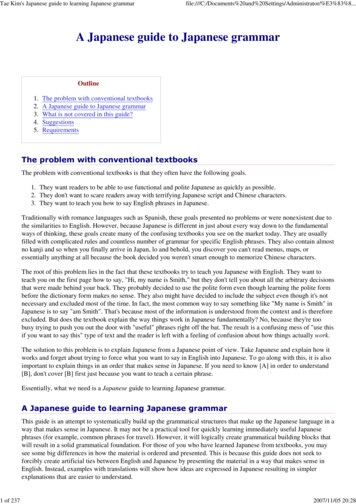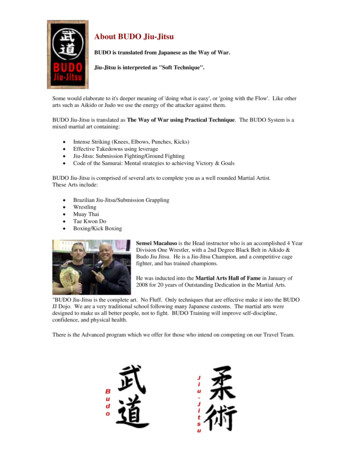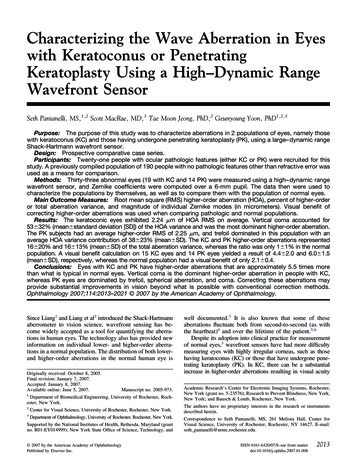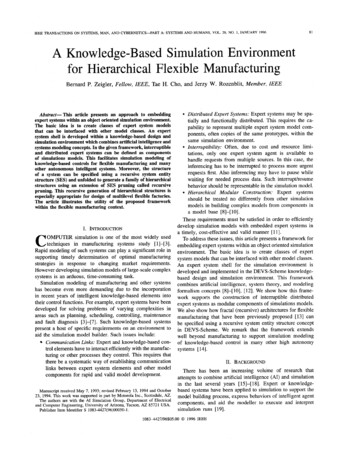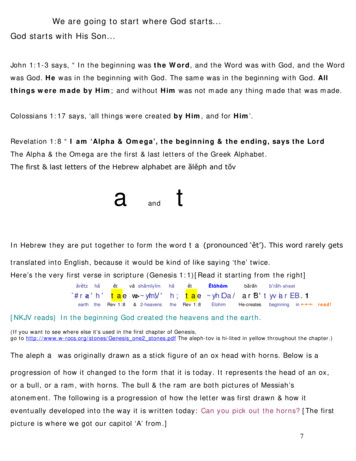
Transcription
We are going to start where God starts.God starts with His Son.John 1:1-3 says, “ In the beginning was the Word, and the Word was with God, and the Wordwas God. He was in the beginning with God. The same was in the beginning with God. Allthings were made by Him; and without Him was not made any thing made that was made.Colossians 1:17 says, ‘all things were created by Him, and for Him’.Revelation 1:8 “ I am ‘Alpha & Omega’, the beginning & the ending, says the LordThe Alpha & the Omega are the first & last letters of the Greek Alphabet.The first & last letters of the Hebrew alphabet are ălěph and tŏvatandIn Hebrew they are put together to form the wordta (pronounced ‘ět’). This word rarely getstranslated into English, because it would be kind of like saying ‘the’ twice.Here’s the very first verse in scripture (Genesis 1:1)[Read it starting from the right]ărĕtzhăĕtvā shămīyĭmhăĕtĔlōhēmbărăhb’răh-sheet #r a' h' tae w yIm;V' h; tae yhiOla/ ar"B' tyviarE B. 1earththeRev 1:8& 2-heavenstheRev 1:8ElohimHe-createsbeginningin read![NKJV reads} In the beginning God created the heavens and the earth.(If you want to see where else it’s used in the first chapter of Genesis,go to http://www.w-rocs.org/stones/Genesis one2 stones.pdf The aleph-tov is hi-lited in yellow throughout the chapter.)The alephawas originally drawn as a stick figure of an ox head with horns. Below is aprogression of how it changed to the form that it is today. It represents the head of an ox,or a bull, or a ram, with horns. The bull & the ram are both pictures of Messiah’satonement. The following is a progression of how the letter was first drawn & how iteventually developed into the way it is written today: Can you pick out the horns? [The firstpicture is where we got our capitol ‘A’ from.]7
In the old days, when a person sinned, they would bring a perfect cow, goat, or sheep to thetemple. Then they would placed their hands on the animal’s head & confessed their sins overthat animal’s head, then the animal’s throat was slit & the blood was collected & poured out atthe base of the altar. Then the animal’s head along with the fat was burned on the altar. (SeeLeviticus for all the various details.)8
The lettera is a picture of a sacrifice. Lot’s of sacrifices were made, much more than could becounted, so which one is this letter a picture of? John 1:29 says, “Behold the Lamb of God whotakes away the sins of the world!” God only has one Lamb, & that is His Son! So. The lettera is a picture of Jesus! [In Hebrew, Jesus’ name is ‘Yeshua’ which means ‘Salvation’ or‘Savior’.]& if you think that’s profound, take a look at the last letter in the Hebrew alphabet.tŏv}tNotice on the left side that there is a little foot sticking out.When we draw this as a stick figure it looks like thisThis letter is called ‘Tŏv’. It makes a ‘t’ sound. It’s where our letter ‘T’ came from.Here’s how the letter was first written:Xor It was a cross! The symbolic meaning of the letter means ‘to seal a covenant’.The Lamb of God sealed the Everlasting Covenant with His own blood! [See Hebrews]Now, because Messiah is the King, the tov looks like a throne without a backThe above is how it would look with a back. King’s thrones have foot-stools or foot-rests.Why do you suppose Messiah has a foot-rest on His throne?9
Did you know that in Revelation 22:1 that it says that there is a river coming out of Histhrone? Maybe He puts His feet up on the foot-rest when He doesn’t want to dangle them inthe water! Did you know that whoever drinks that water will live forever? Maybe the foot-restis to remind us that Yeshua is the Source of Living Waters! {John 4:14)Imagine what the LORD’s throne looks like & draw me a picture of it. It has to have watercoming out from underneath it, & it has to have a rainbow around it. You can even drawangels flying around it if you like. See if you can find out what the Bible says about it [Hint:Rev 4:3, 22:1]Yeshua is theta read!from Genesis 1:1 to the end of the Book of Revelation {22:13)!atatHe is the ‘Beginning’ [ ] and the ‘End’ [ ]. The ‘First’ [ ] and the Last [ ] !So what is the 2nd letter in the Hebrew alphabet?Bět as in BethlehembIt’s a picture of a house.If somebody is inside of the house, it’s pronounced with a ‘b’ sound,and it has a dot in the middle.BIf the house is empty, it’s pronounced with a ‘v’ sound& there is no dot in the middle.b10
When this letter was first written it just looked like a .Have you ever crawled inside a cardboard and pretended that it was your house?[Later the Greeks probably decided that because was also the number 2,that there had to be 2 houses } so they put the together like thisand drew a line in the middle, & that’s how ‘B’ was invented!]WhenBis at the beginning of a word it usually means ‘in’just like ‘in the beginning’ [b’răh-sheet]tyviarEB read![;WvyEBGuess what this word is? ba [pronounced ‘ăh-v’] . Dad!or ‘b’ Yeshua’ [in Jesus]If you are b’ Yeshua read![;WvyEBIn Hebrew God’s NAME isthen God is yourba. Do you know His NAME?hwhybut in an ‘English’ Bible it looks like this: ‘LORD’ (spelled with all capitol letters).yThe first letter used to spell God’s NAME is a picture of a hand. In Hebrew a hand is called aYōhd or a yăhd {There are different accents among Hebrew speaking people just like there aredifferent accents among English speaking people.).Do you see the little ‘hand’ at the beginning of God’s NAME? (It kind of looks like an excitedcomma that’s jumping up off of the line.) When they first started making this letter, they drewit as a stick figure of the lower half of the arm. It included the elbow as well as the fingers.The symbolic meaning of the letter is ‘to create’, or ‘to make’ or ‘work’ or ‘deed’. Here inGod’s NAME, it’s referring to the hands of the Creator![And.this is where our letter ‘y’came from. The next time you make a letter ‘y’, remember that it is a modern stick picture ofa hand!yE even makes the samesound as ‘y’.]11
hThe next letter in God’s NAME is called ‘Hey’ (as in, “Hey you!”).This letter can be a word all by itself. When you see it at the beginning of a word, it usuallymeans ‘the’ & is pronounced as Hă. For example, ‘The NAME’ in Hebrew is ‘Hă Shěm’. MostJewish people won’t even pronounce God’s NAME because it is so sacred. Instead, when theycome across it in scripture, they will say ‘Ha Shem’ (The NAME). Or. they will spell out HisNAME, but they won’t pronounce it. They will say Yohd-Hey-Vav-Heyhwhy instead ofsaying YAHWEH or YAHVEH. May ‘Ha Shem’ open up their eyes to see what they aremissing, because ‘Hey’his an absolutely profound picture!When people first started making this letter, they drew a stick picture of a man with raisedarms.If somebody was hanging from an execution stake (a cross), their arms would beraised. It’s also the way arms are when one is offering up a sacrifice of praise.The Ancient Hebrews eventually started drawing it as a backwards E on a stick.(It’s where our ‘E’ came from.)In Modern Hebrew it is a stick picture of an ‘open window’. The symbolic meaning of the lettermeans ‘to reveal something’. In the Hebrew language, when something is repeated twice, itmeans that it’s something that is very important to understand. Notice how there are 2Heys in God’s NAME.hwhyAnd something else. this letter is pronounced like an ‘h’. To make the sound of the ‘h’, aperson has to blow their breath out. Try it! When Yeshua gave up His life to save us, He had toblow His breath out. And also, when He created the first man, Adam, He blew His breath VHyiytzervahm'd"a] h' !mi rp'[' d"a' h' ta, yhOla/ hw"hy rc yYI w: 2 7ground/dirt the ym hY"x; vp,n l. d"a' h' yhiy w: yYIx;living tm;v.nIwyP'a;breath[noun] his-nostrilsYAHVEH He-formsbayipach&vaB.xP;YI w:intoHe-breathes &12
Now, incase you are still not sure about this, check this out. The 3rd letter in God’s NAME isa stick picture of a nail! Oh man! Have you ever stepped on a nail? I have! It hurts!wThe Ancient Hebrew stick picture is a kind of nail that can be used as a hook.Mosthooks are not shinny! They have to be thick in order to hold whatever is hooked to them.Yeshua was nailed to the execution stake with nails that ‘hooked’ Him to the wood.Ouch! Ouch! Ouch!This letter is called văv.[In Christian seminaries where they teach Ancient Biblical Hebrew, it is called a ‘wāw’. That’swhy there are several different versions of how to pronounce Ha Shem. The Yemenite Jewsalso pronounce Ha Shem as ‘YAHWEH’.]The letter ‘vav’ is a Hebrew word that generally means ‘and’.In Hebrew a paragraph or a subject will start with a sentence, and then every sentenceafterwards in the paragraph will begin with ‘and’.In the New Testament, notice how so many of the sentences begin with ‘and’. That’s becausethey were all Hebrew speakers.[Some people are convinced (including me) that even Luke was a Jew, & probably a Levite. zines/Lamplighter SepOct07 Anti-Semitism.pdf pages 12-13‘Was Luke a Gentile?’]If you would like to see how this works in the Hebrew Text go to Women’s Resources OnCreation Science www.w-rocs.org & click on the section called ‘Turning over every stone’.Then pick any portion of scripture on the list. In Hebrew, one thought hooks on to the next,& the ‘vav’ is the tool that hooks them together. In English, beginning every sentence with‘and’ is not acceptable, that’s why people who speak English are always loosing their train ofthought! It’s because their thoughts aren’t all hooked together!!So what kind of sound doeswmake? If it has a dot after itWit says ‘oo’ like in ‘boo hoo’when somebody cries when they are stuck with a nail!. When it doesn’t have a dot, it makes a‘v’ sound like, “Oh victory in Jesus, my Savior for ever!” Sing it! [‘Victory in Jesus’ hymn]13
yhwh Yodh: the hand of The Creator Hey: Vav:arms raised/stretched-out ['to reveal'].secured-with-a nail-that-is-used-as-a-hook Hey:same as above. The arm of YAHVEH revealed! When it’s repeated in Hebrew, it means, “Hey, payattention!! This is very important!!”God's plan of salvation is right there in the very spelling of His NAME! What an amazing& incredibly beautiful NAME!!!14
The Alpha & the Omega are the first & last letters of the Greek Alphabet. The first & last letters of the Hebrew alphabet are ălěph and tŏv a and t In Hebrew they are put together to form the word ta (pronounced 'ět'). This word rarely gets translated into English, because it would be kind of like saying 'the' twice.
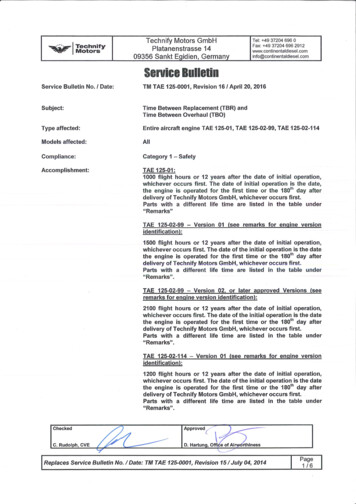
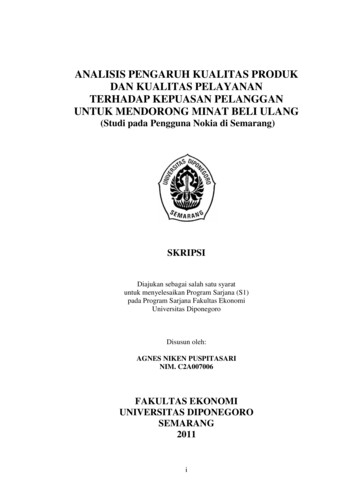
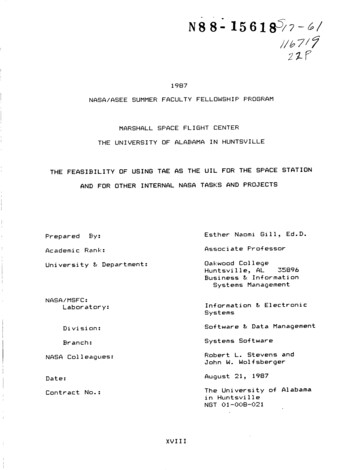
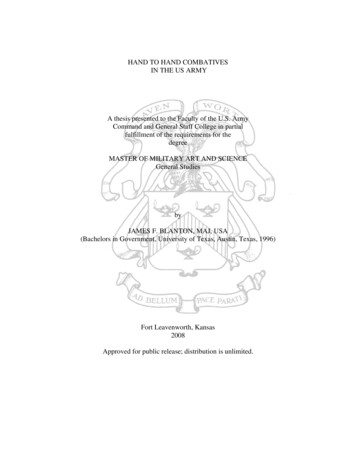
![Welcome [ shambhalamartialarts ]](/img/2/welcome-packet.jpg)
